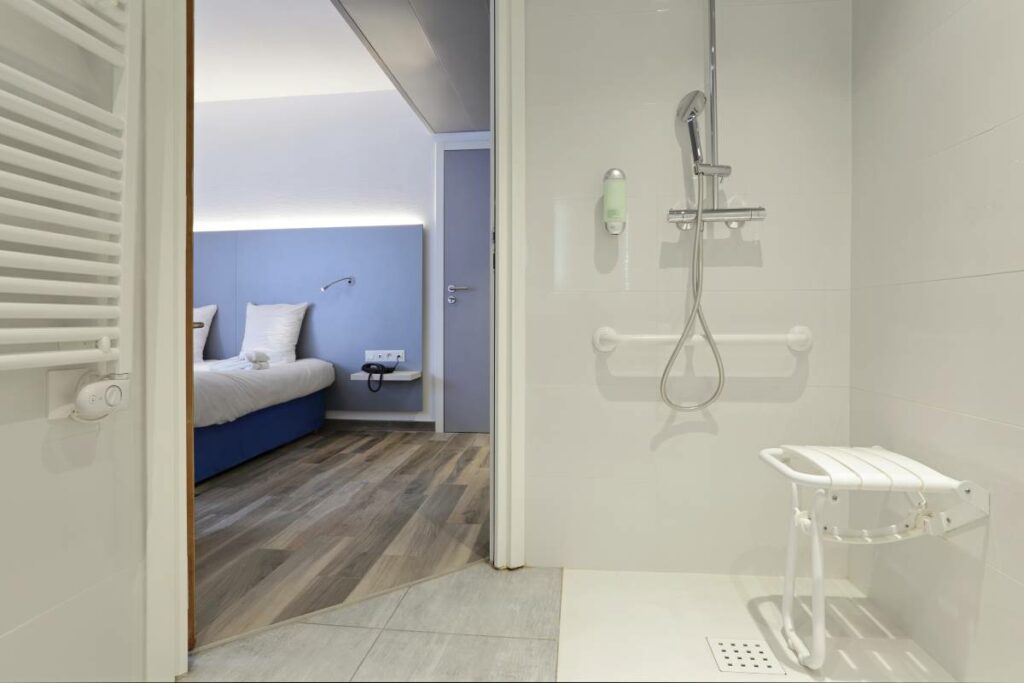The majority of homes are usually designed with a non-disabled person in mind. This means most of us can navigate around the house without any difficulty. Unfortunately, the situation is not the same for many disabled people.
Disabilities arising from physical, vision, mental capacity, and other problems can make moving around within the home difficult. As a result, houses must be adapted to make it easier for disabled people.
To assist with the financial costs, the Disabled Facilities Grant is available. This article looks at these grants in detail to ensure you are well-informed on what you can claim.

- What Is a Disabled Facilities Grant?
- Who Qualifies for Disabled Facilities Grants?
- What Changes Can Be Made to the Home?
- How To Make an Application for Disabled Facilities Grants
- How Much Are Disabled Facilities Grants?
- Making Life a Little Easier
What Is a Disabled Facilities Grant?
Disabled Facilities Grants provide financial assistance to make physical changes to a person’s home. It enables people with a disability to live safely and enjoy independence.
This grant is entirely free, and there is no need to repay it at a later date. The local council deals with the applications and decides whether to approve an application or not.
The grant is not age dependent, which means you don’t need to be an adult to obtain it and all kinds of tenures can apply.
Who Qualifies for Disabled Facilities Grants?
Anyone who is disabled qualifies for the scheme. A person is viewed as disabled if they have:
- Substantial impaired hearing, sight, or speech
- Mental impairment or disorder
- Substantial physical disability caused by injury or illness
To be eligible, you must be any of the following:
- A homeowner (a person can be a landlord if they have a disabled tenant)
- A tenant in a council, housing association, or private property
- A person who resides in a caravan or houseboat
If someone is not the tenant or the homeowner, then the tenant or the homeowner must apply on their behalf. The candidate must live in the home for the duration of the housing grant. This is usually 5 years but can be less based on the person’s health and circumstances.
You can also read, “How to Apply for VAT Relief When You Are Disabled.”
What Changes Can Be Made to the Home?
These grants for people with disabilities can be used to make changes such as:
- Installing ramps or widening doors to make it easier to enter the home
- Installing measures to make it easier to access the different areas of the home, such as the kitchen, living room, and bedroom (for instance, installing stairlifts)
- Providing a more suitable heating system
- Providing areas where the person can be left unattended (such as fitting suitable lighting for a visually impaired person)
- Making changes to bathroom areas such that the lavatory, bathing, and showering facilities are more easily accessible
- Making it easier to access outdoor garden areas
- Installing technology to enable independent living
In some instances, planning permission is required from the local authority to modify homes. For example, to build an extension will require planning permission. It will need to be obtained before the application can be processed. You may also need to employ a surveyor or an architect to oversee the modifications once approval is given.
How To Make an Application for Disabled Facilities Grants
The application must be made through the local council except for those in Northern Ireland. In that case, you need to contact their Health and Social Services Trust to apply.
Once you apply, the council may send a trained assessor or an occupational therapist to conduct an assessment. The outcome of the claim is given within 6 months of the application.
Do you need help with the application? A government-funded organisation called Foundations is there to assist.
How Payments Are Made
If you are successful with the application, the payments are made in instalments as the work progresses. Sometimes the payments are made once the work is complete. The funding is usually given directly to the contractor. However, in some instances, the funds may be given to the applicant to pay the individual or the company carrying out the work.
How Much Are Disabled Facilities Grants?
The amount will depend on the household income and whether the applicant has savings over £6000. The income and the savings of a landlord are not considered. However, the council may ask the property to be let to another disabled person if the current tenant leaves within 5 years.
Grants for disabled children under the age of 18 can be obtained without taking into account the income levels of their parents. The table below outlines the grant payments in the different parts of the UK.
| Which Part of the UK? | Maximum Grant |
| England | £30,000 |
| Wales | £36,000 |
| Northern Ireland | £25,000 |
Scotland does not have a Disabled Facilities Grant fund. Instead, they run a housing adaptation scheme.
Making Life a Little Easier
The modern home is built with a regular person in mind. As a result, some homes occupied by disabled people will need to be modified. Thanks to the disabled facilities grant, help is available to pay for the cost of these changes. Be sure to contact your local council if you need any modifications or changes to your home.





